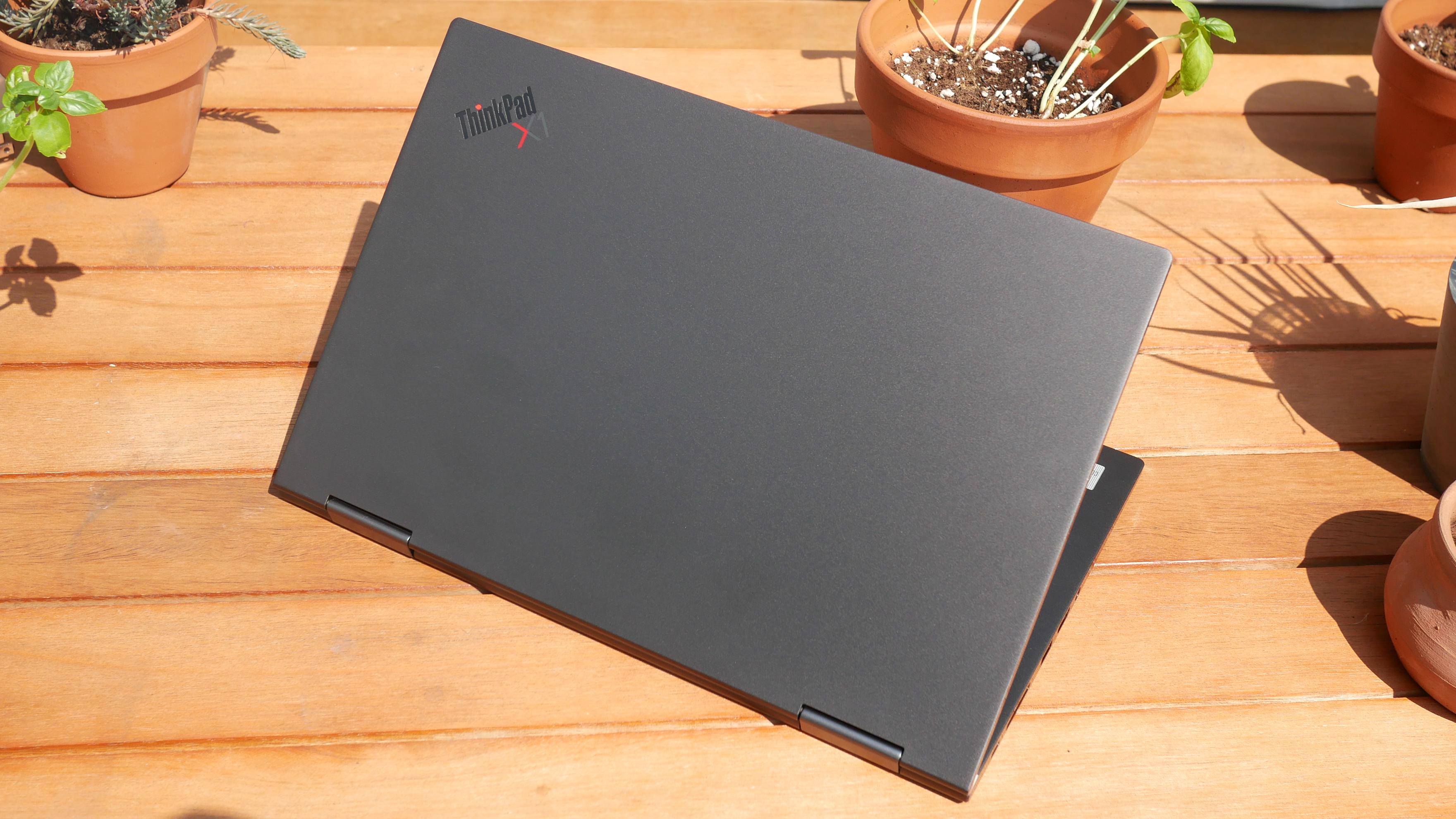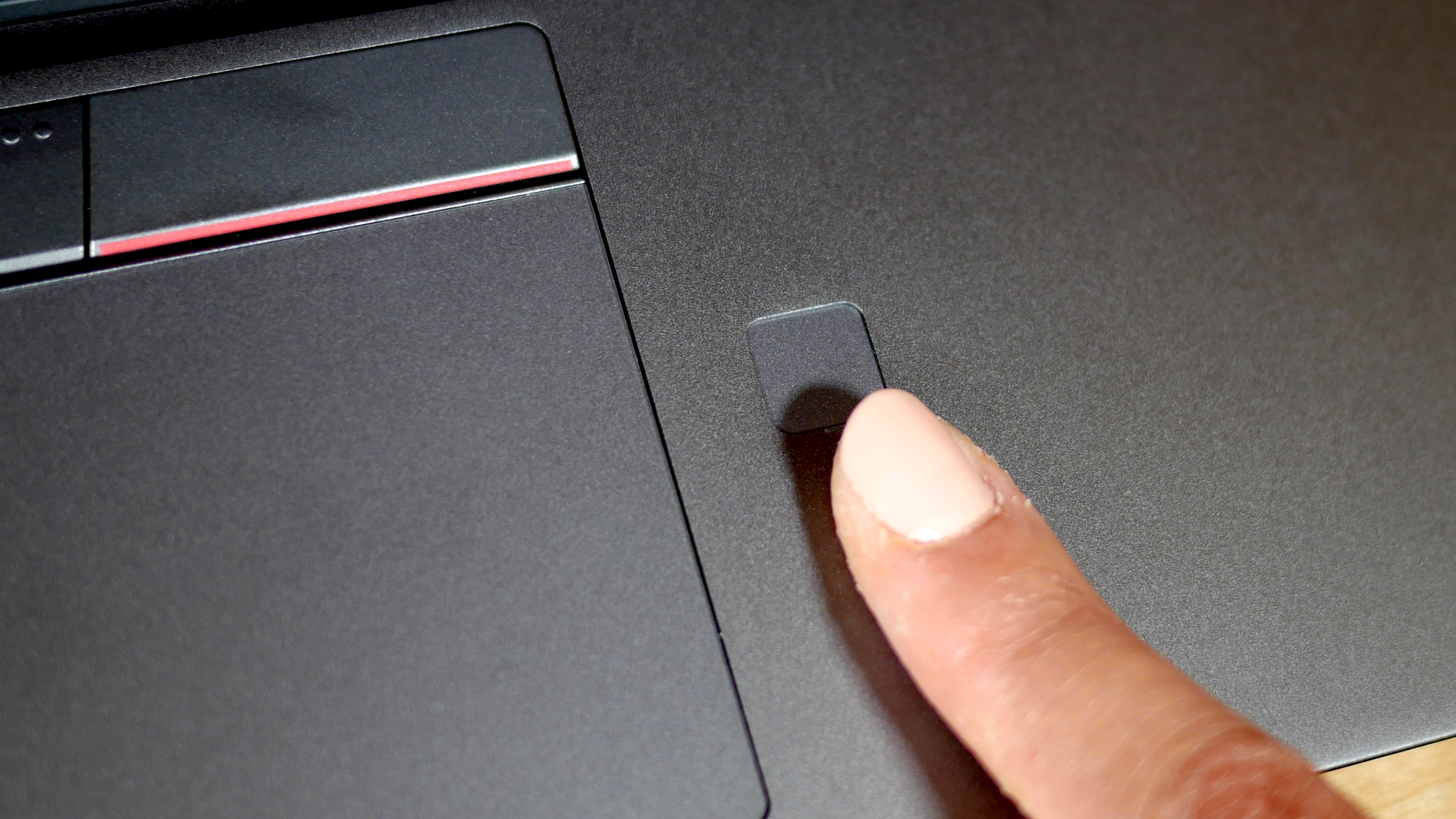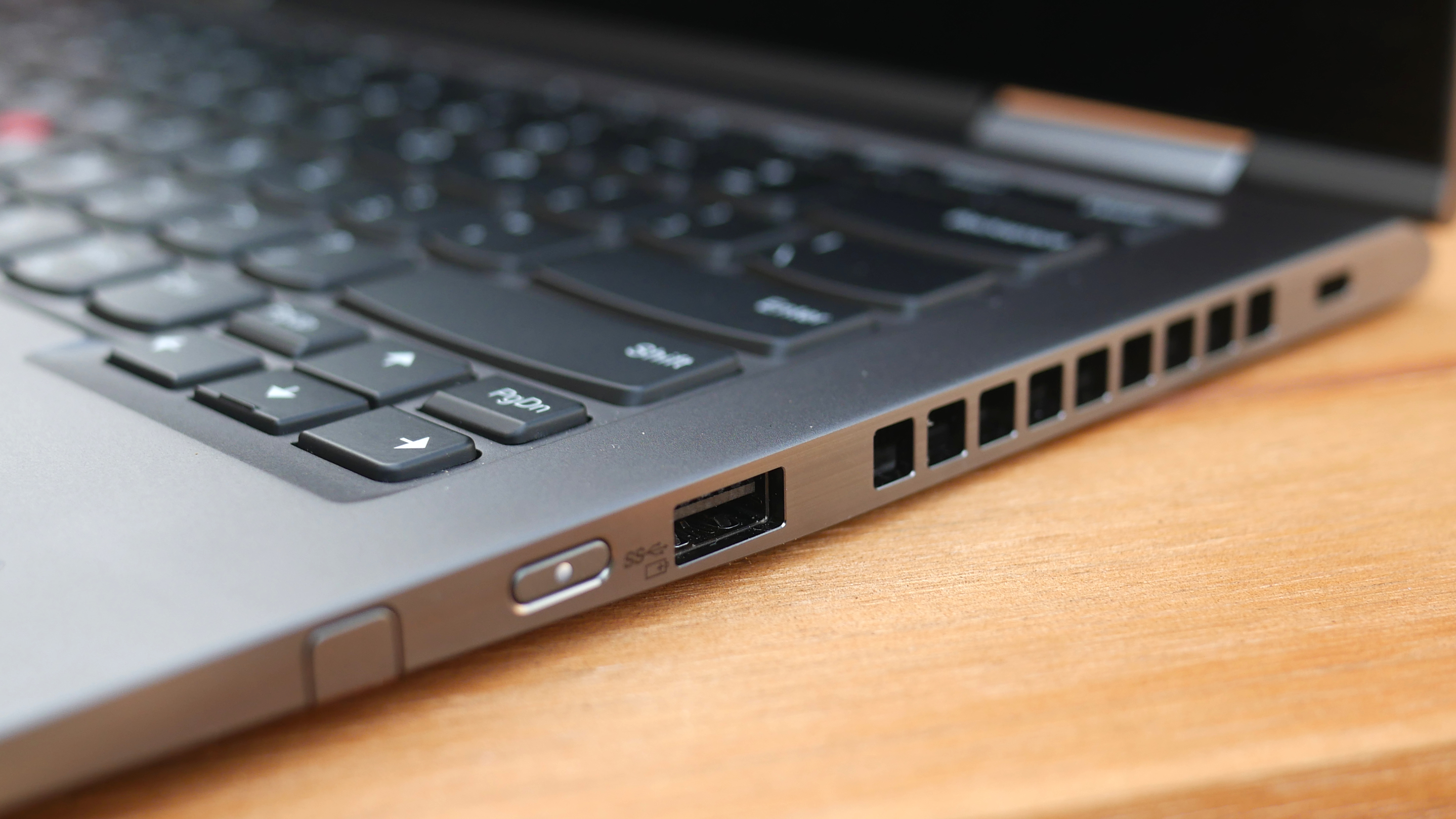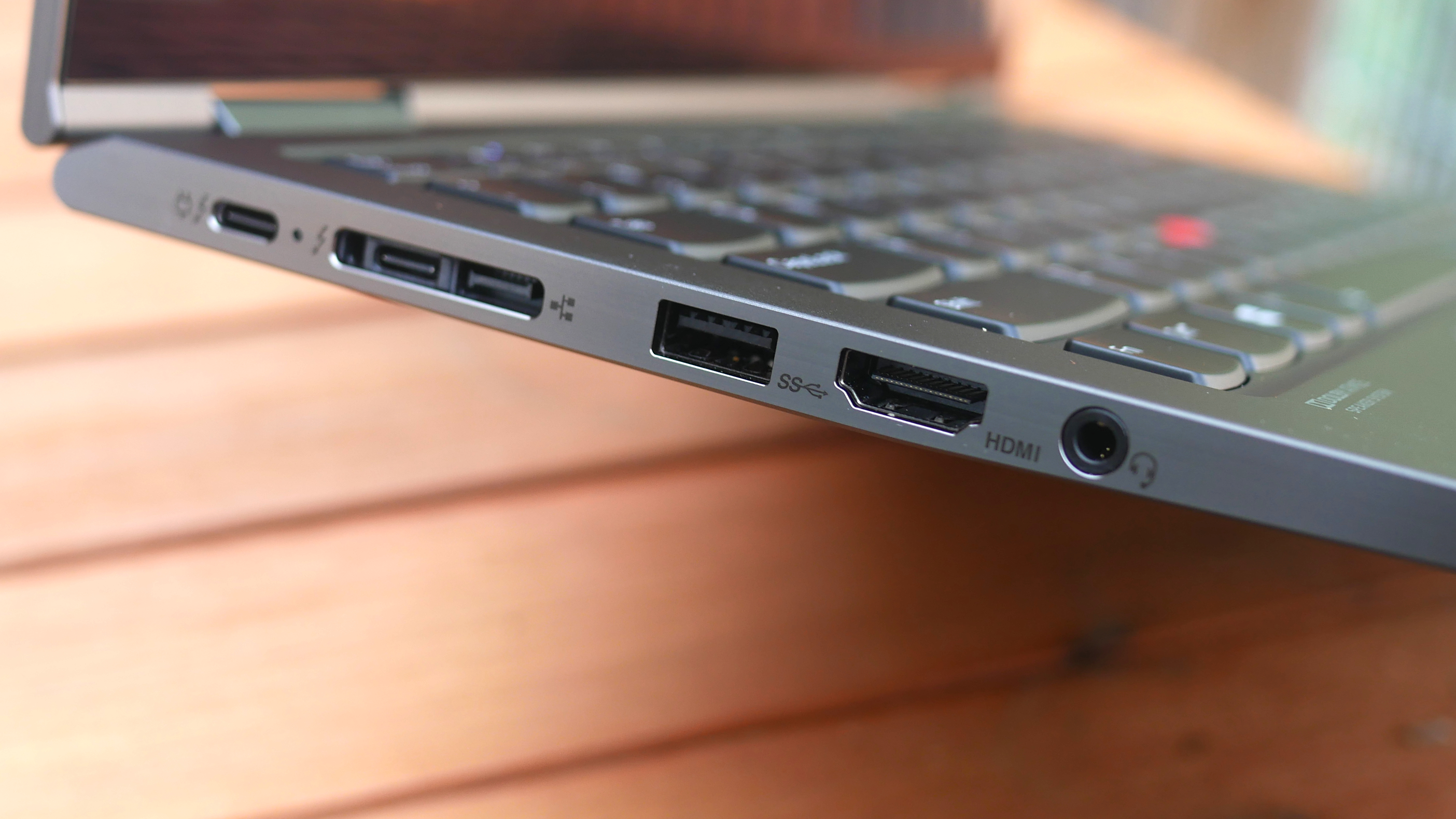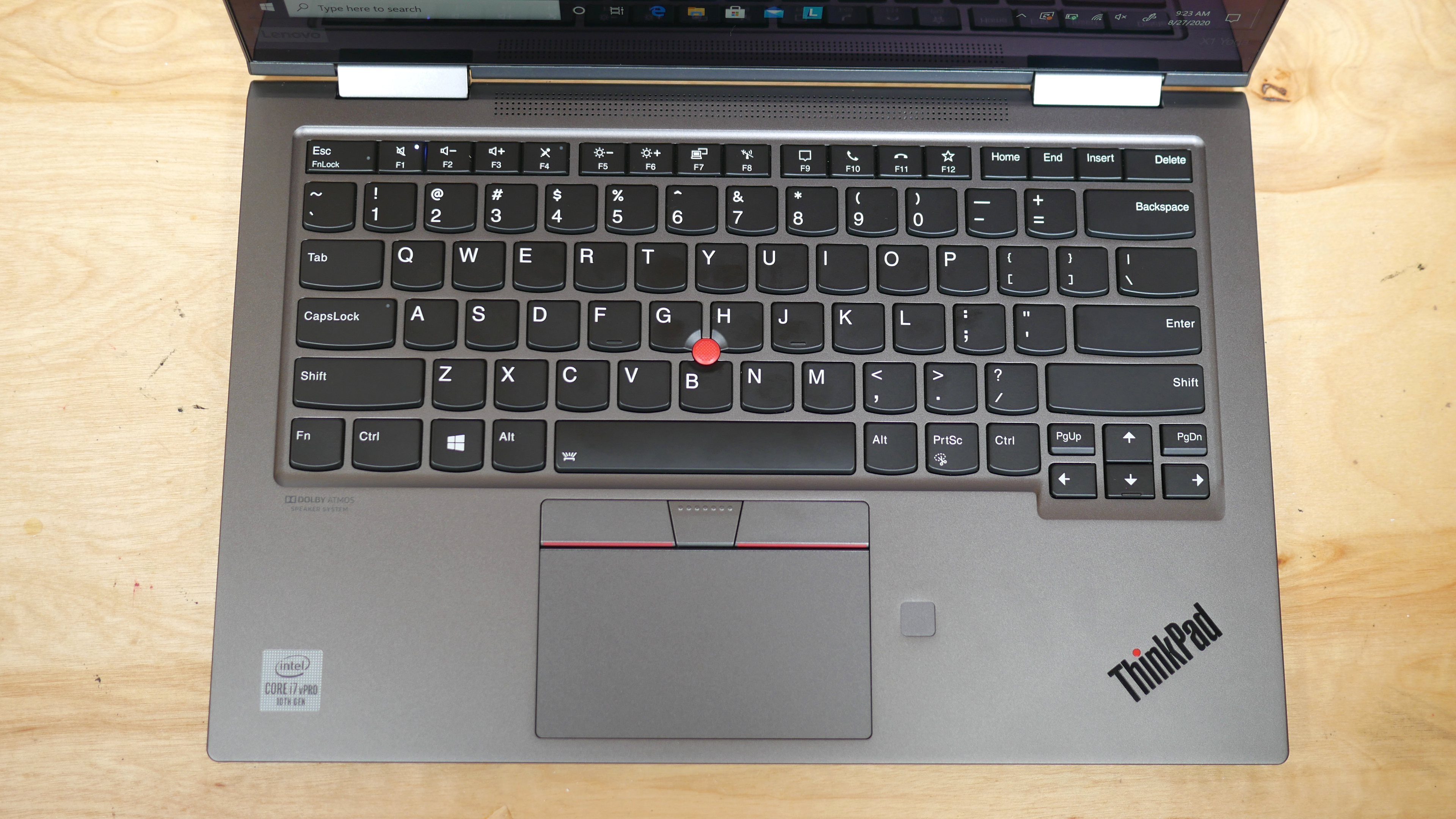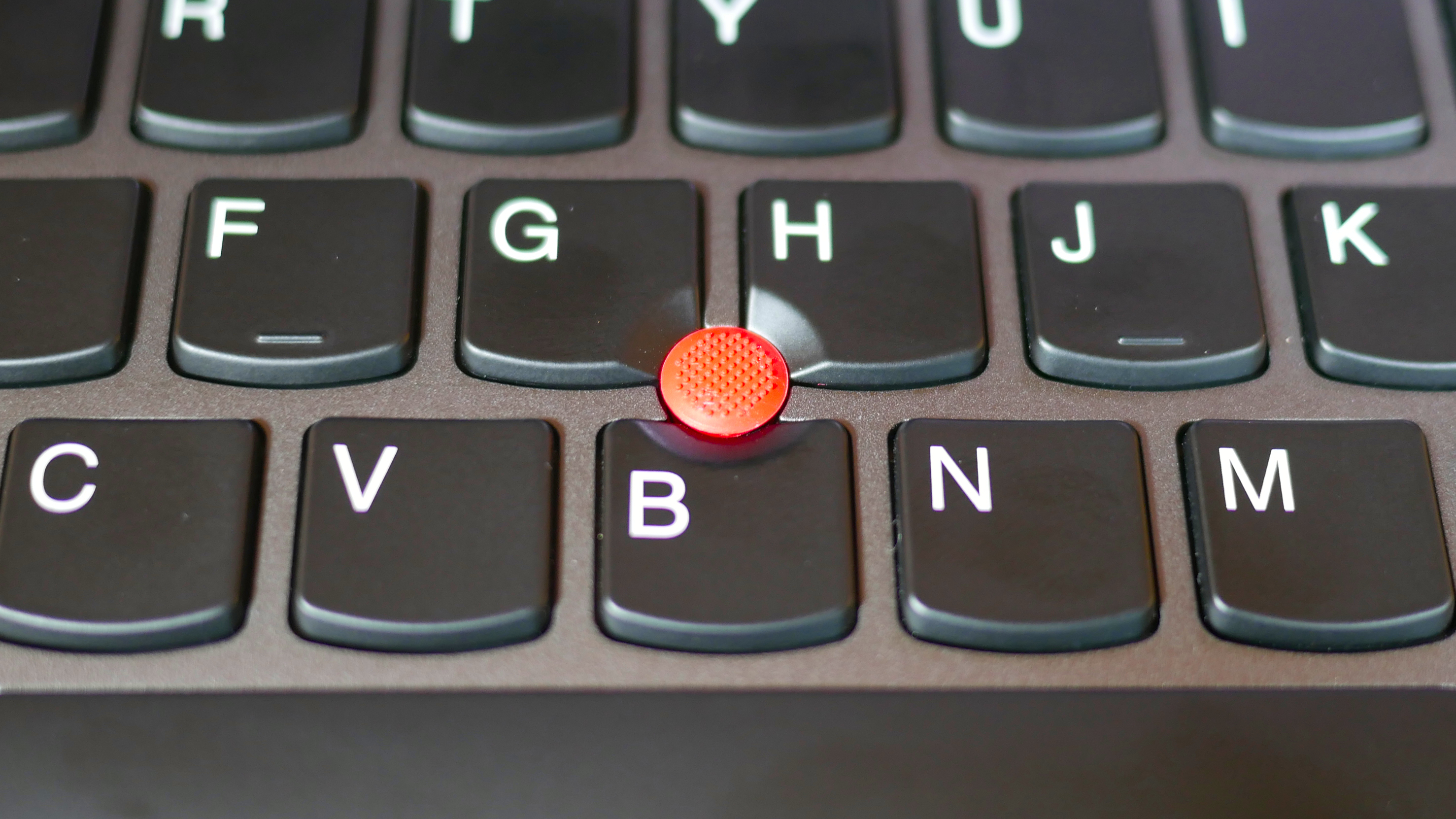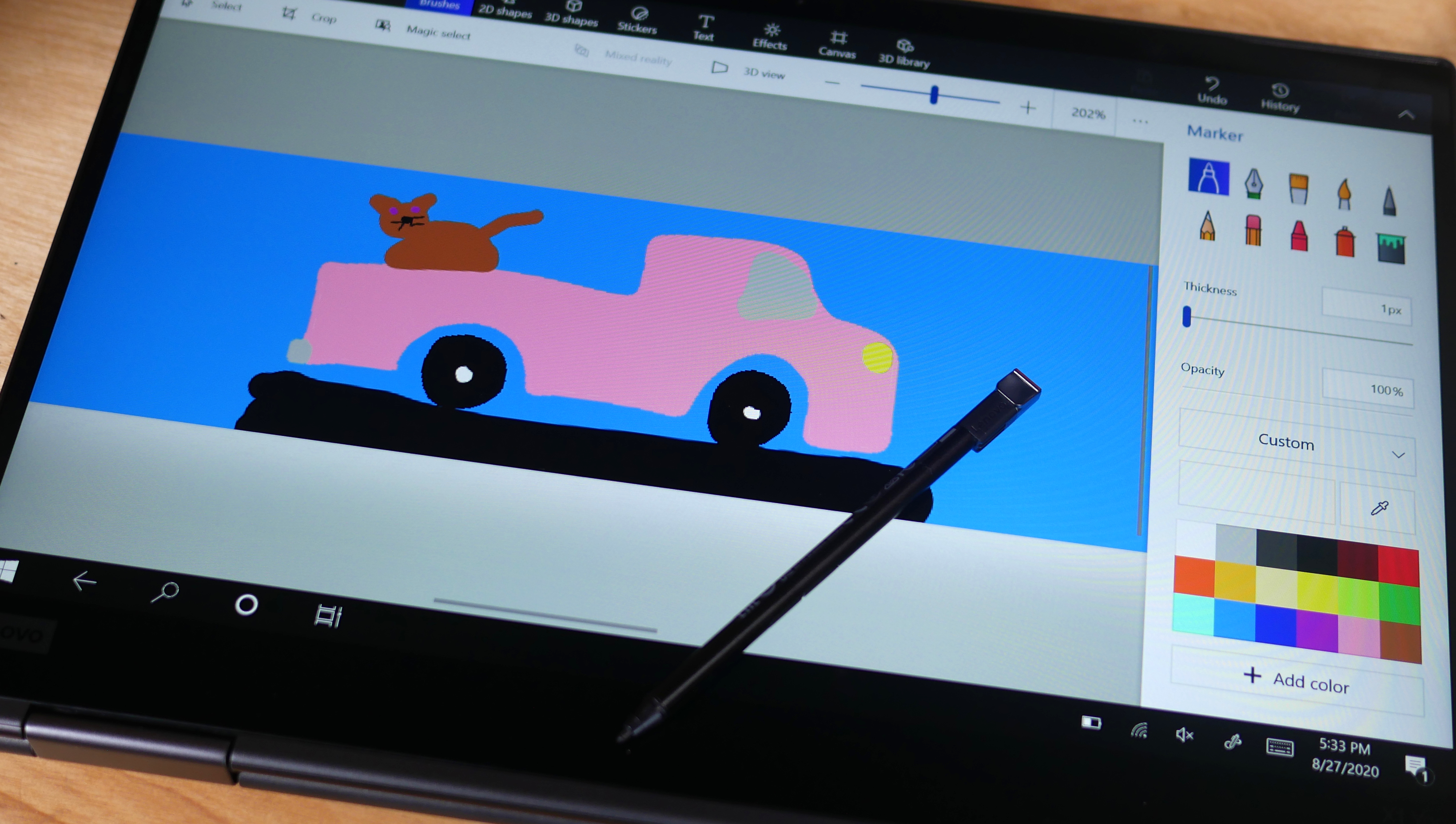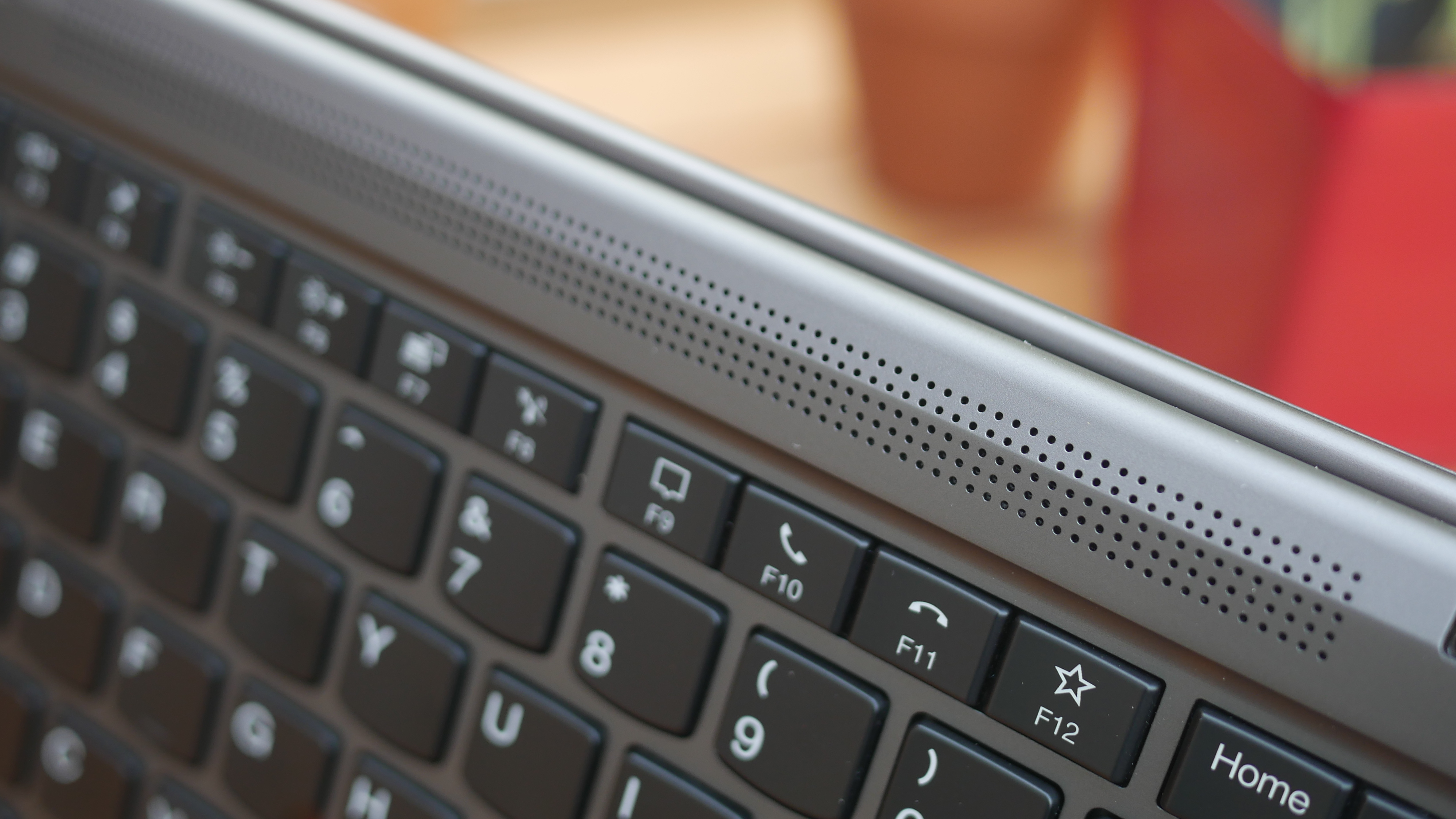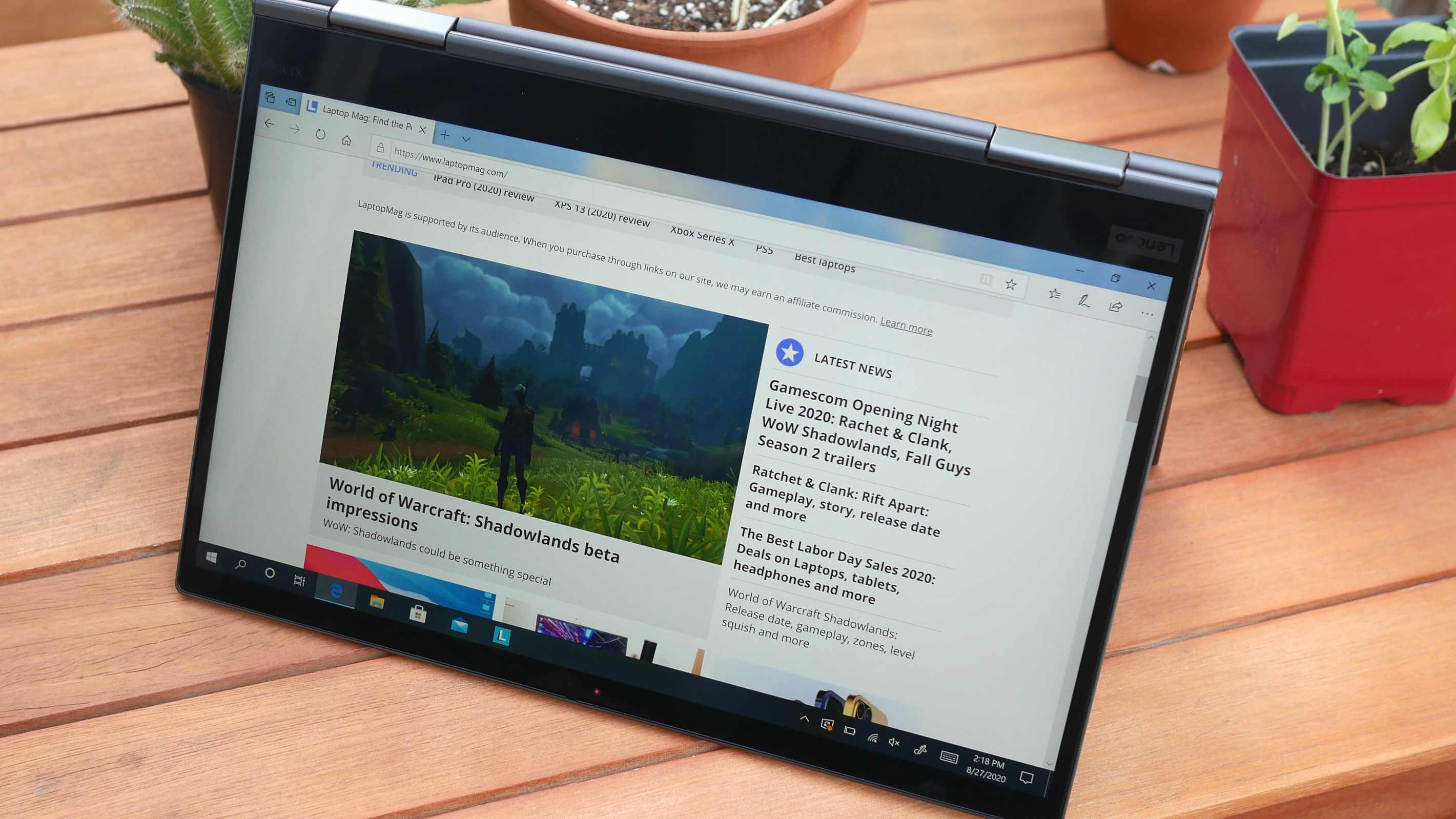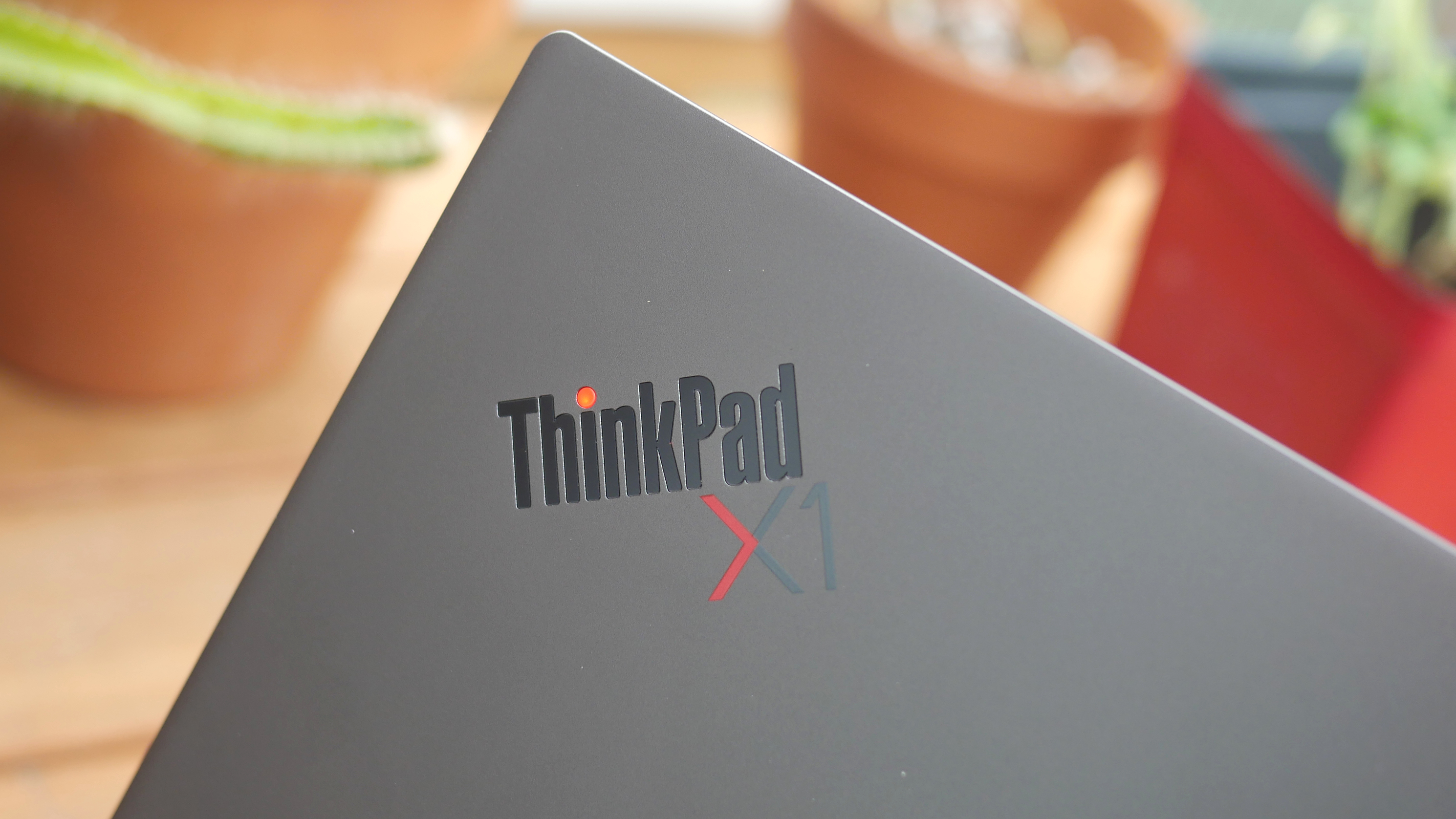Laptop Mag Verdict
Lenovo's ThinkPad X1 Yoga remains the best business 2-in-1 despite sticking with an aging formula.
Pros
- +
Bright, vivid 1080p and 4K displays
- +
Great performance (superfast SSD)
- +
Garaged stylus included
- +
World-class keyboard
- +
Long battery life
Cons
- -
Thick display bezels
- -
Weak graphics
- -
Small touchpad
Why you can trust Laptop Mag
Price: $1,670 (1080p); $2,106 (4K)
CPU: Intel Core i5-10310U; Core i7-10610U
GPU: Intel UHD
RAM: 16GB
Storage: 256GB; 512GB SSD
Display: 14-inch, 1080p and 4K
Battery: 11:30 (1080p); 7:28 (4K)
Size: 12 x 8.5 x 0.6 inches
Weight: 3 pounds
After swapping carbon out for metal, the ThinkPad X1 Yoga returns this year with only minor updates. Opting for the 5th Gen model will get you the latest 10th Gen Intel Comet Lake vPro CPUs along with a few other expected additions, like Wi-Fi 6 support. The ThinkPad X1 Yoga Gen 5 is otherwise identical to its predecessor. It would normally risk criticism if the previous model hadn't been dubbed the best 2-in-1 laptop for business users.
This latest model retains the title of best business laptop in a convertible form factor, but the gap between it and its closest competitors, like the HP Elite Dragonfly, is closing. That has more to do with the competition catching up than the X1 Yoga having any notable shortcomings. This 2-in-1 laptop delivers everything we loved about the previous model, including great 1080p and 4K displays, a world-class keyboard, tons of business features and a useful garaged stylus.
But the lack of any meaningful updates means there is no need for those with a 4th Gen X1 Yoga to upgrade while most other consumers looking for a top 2-in-1 should consider non-business models, which deliver many of the same features as the ThinkPad X1 Yoga but at a lower price.
Lenovo ThinkPad X1 Yoga price and configuration options
This is an expensive laptop so you'll want to consider whether a business laptop is right for you.
The base model X1 Yoga starts at $1,439 and comes with an Intel Core i5-10210U CPU, 8GB of RAM, a 256GB SSD and a 14-inch, 1080p display.
We reviewed two ThinkPad X1 Yoga models. The cheaper version costs $1,670 and comes with an Intel Core i5-10310U CPU, 16GB of RAM, a 256GB SSD and a 1080p display. Our pricier version costs a wallet-busting $2,106 and is equipped with a Core i7-10610U CPU, 16GB of RAM, a 512GB SSD and a 14-inch, 4K panel.
From there, you can increase the storage from 512GB to 1TB for an extra $268 or work on the go with 4G LTE for another $200 (plus a mobile subscription fee).
Sign up to receive The Snapshot, a free special dispatch from Laptop Mag, in your inbox.
Lenovo ThinkPad X1 Yoga design
The ThinkPad X1 Yoga has the same design as its predecessor apart from a few styling changes. We'll give Lenovo a pass on this one considering it took a big risk last year by shifting the X1 Yoga from carbon to aluminum.
I'm still not convinced it was the right move. I miss the carbon finish; the plush material gives the X1 Carbon (the X1 Yoga's sibling) a distinctiveness and feels great against your palms as you type. Not that I have any problems with the aluminum and magnesium blend employed by the X1 Yoga — it feels sturdy and premium but just...ordinary.
When the X1 Yoga moved to aluminum it received a stylish Iron Gray finish. It's the same shade seen on the Yoga C940 and enough to make the X1 Yoga stand out from its boring silver competitors.
This particular laptop may have ditched the stealthy black finish, but it kept all of the other elements that make a ThinkPad a ThinkPad. That includes the red trim around the touchpad, a fingerprint sensor on the deck, a red-illuminated "i" on the lid and the red rubber pointing stick nestled in the center of the keyboard. The only visual update I noticed on this 5th Gen version is the large X1 sticker stamped beneath the "ThinkPad" logo on the lid, which gives the notebook a more consumer-friendly look.
Overall, the ThinkPad X1 Yoga is a thin, lightweight and attractive laptop, but it's a few tweaks away from feeling cutting edge. For that, Lenovo needs to reduce the display bezels on all sides, particularly the chunky top and bottom bezels. Doing so would modernize the look and possibly reduce the X1 Yoga's overall footprint.
While it might look a step behind, the X1 Yoga feels great. It has a subtle rough texture on the deck for added grip and the hinges are sturdy. Speaking of which, "Yoga" denotes a 2-in-1, meaning this laptop can transform into a tablet. What makes this a better tablet than most 2-in-1 laptops is the included stylus, which slots into a garaged housing on the right side of the laptop for safekeeping when you're done drawing or jotting notes.
At 12 x 8.5 x 0.6 inches and 3 pounds, the ThinkPad X1 Yoga is heavier than the HP Elite Dragonfly (2.5 pounds) and the ThinkPad X1 Carbon (2.7 pounds). The Dell Latitude 9410 2-in-1 (3 pounds) weighs as much as the X1 Yoga.
Lenovo ThinkPad X1 Yoga durability and security
Like most ThinkPads, the X1 Yoga is loaded with security and durability features. The chassis passed a dozen military-grade durability tests, proving its ability to withstand extreme conditions, like high altitudes, dust storms, and other environmental hazards you generally want to avoid.
Hardware and software features work together to protect the data inside of your ThinkPad X1 Yoga. Those you can see include the fingerprint sensor on the deck and the IR camera above the display. When the webcam isn't in use, you can slide over the ThinkShutter camera cover with your thumb for added peace of mind.
Every ThinkPad X1 Yoga comes with a dTPM 2.0 chip that ensures all transferred data is encrypted while certain configs come with a ThinkPad PrivacyGuard, a built-in privacy filter that intentionally reduces the viewing angles of the display.
Lenovo ThinkPad X1 Yoga ports
The X1 Yoga has a generous selection of ports for your work-at-home needs. On the right side of the laptop are a USB 3.2 Type-A port and a lock slot.
On the left side, you'll find two Thunderbolt 3 ports, a second USB 3.2 Type-A port, an HDMI 1.4, a headphone/mic jack and a network extension connector for docking.
Lenovo ThinkPad X1 Yoga display
There are three different display options to choose from; we tested two of them, the 14-inch, 1080p panel and 4K screen. They are both great but if you want the best picture quality, go for the 4K display. It exhibits more vivid colors and sharp detail than the FHD screen.
The trailer for Black Widow looked intense on both screens. On the 1080p panel, colors were rich and there was plenty of detail. Red Guardian's mask was a dark blood red and I could see individual strands of hair in David Harbour's beard. The 4K display was brighter and more saturated, however, I preferred the more realistic red tones on the 1080p compared with the blood orange tone on the 4K panel.
On the other hand, the 4K display had a more accurate white balance — the ornate molding in a subway scene was a pure white compared to a light gray on the FHD display. The UHD display delivers more lurid, punchy tones, but I'm not convinced that the gap in image quality is worth the battery hit (more on that below).
According to our colorimeter, the 1080p panel covers 102% of the sRGB color gamut while the 4K display reaches 133%. Given the scores, It wouldn't surprise me if this is the same 1080p (101%) and 4K (135%) panels on the ThinkPad X1 Carbon. The Elite Dragonfly's 1080p display (117%) and the Latitude 9410 2-in-1 (111%) is more colorful than the one on the ThinkPad X1 Yoga. The category average for premium laptops is 120%.
The Yoga's 1080p display reached 404 nits while the 4K model got up to 488 nits. Both panels outshone the Elite Dragonfly (474 nits), the Latitude 9410 2-in-1 (287 nits) and the category average (378 nits). Again, the ThinkPad X1 Carbon received similar results (498 nits on 4K; 364 nits on 1080p) as the Yoga.
Lenovo ThinkPad X1 Yoga keyboard, touchpad and TrackPoint
It's the ThinkPad keyboard we know and love, just on a super-slim chassis. The bouncy scalloped assisted my fingers in jumping from one letter to the next as I typed up this review. There is a surprising amount of key travel given the space constraints and the keys are a generous size for people with larger hands.
I also like the keyboard layout apart from one annoying oddity. In typical Lenovo fashion, the left Fn and Ctrl keys are swapped so I couldn't instinctively reach for the bottom-left-most key when using hotkeys, like Ctrl+C to copy or Ctrl+V to paste. Now for the good stuff: the arrow keys, while small, are positioned in an easy-to-use inverted-T and there are some unique shortcut keys on the top row, including a mic mute button and an accept/deny call key.
The 4 x 2.3-inch trackpad is on the smaller side; my fingers brushed the edges of the rectangle when I performed Windows 10 gestures, like pinching out to zoom and three-finger swiping to switch between windows. Size aside, it's a very good touchpad with a smooth surface and reliable Windows Precision drivers.
Alternatively, you can use the red pointing stick located between the G, H and B keys. You either love the nub or you don't; while I'm in the latter camp, I didn't have any problems using it to navigate around webpages, and I appreciate how your fingers can remain on home row as you move the cursor around and use the discrete left-and-right clickers above the touchpad.
And then there's the stylus, your third input option. It's included with the ThinkPad X1 Yoga and hides snugly in a slot on the right side of the machine. It's a real convenience to store the pen when you're done with it and to know where it is the next time you need it. But physical constraints result in a very slim stylus that isn't comfortable to hold.
Lenovo ThinkPad X1 Yoga audio
Speaker quality used to be a key weakness of ThinkPads, but Lenovo stepped it up in recent generations. Those improvements can be attributed to a unique quad-speaker setup consisting of two downward-firing speakers and two upward-firing drivers.
The Killer's "My Own Soul's Warning" filled my large living room/dining area with clear, distortion-free sound with the volume maxed out. The tweeters did a good job with the flurry of electric guitar notes while preventing Brandon Flower's vocals from being blanketed. The treble was piercing at times, but dropping the volume down to 80% balanced things out nicely.
The downward-firing woofers, on the other hand, are weak; the bass in the Black Eyed Peas' "Boom Boom Pow" sounded like someone knocking their fist on a table, not like the low thud I was anticipating.
Lenovo ThinkPad X1 Yoga performance
We tested two versions of the ThinkPad X1 Yoga, a 1080p model with an Intel Core i5-10310U CPU and 16GB of RAM, and a 4K model with a Core i7-10610U CPU with 16GB of RAM.
Both performed admirably in my real-world testing, loading 25 Google Chrome tabs simultaneously without any noticeable slowdowns. There were some minor pauses on the Core i5 version when I played four 1080p YouTube videos in the background and watched someone stream Fall Guys on Twitch, but they never slowed me down. I should also point out that whatever performance gap there is between the Core i5 and Core i7 models wasn't perceivable in my real-world testing (the benchmarks below do a better job of showing the differences).
With a score of 3,567 on the Geekbench 5.0 overall performance benchmark, the ThinkPad X1 Yoga with a Core i5 CPU edged out the Core i5 ThinkPad X1 Carbon (15,467) and the Elite Dragonfly (14,071), which is stuck on Intel 8th Gen CPUs. You'll need to buy the Core i7 model of the X1 Yoga for performance that can best the ThinkPad X1 Carbon (16,958, Core i7-10610U), the Latitude 9410 2-in-1 (16,849, Core i7-10610U) and the category average (17,091).
On our video transcoding test, the cheaper ThinkPad X1 Yoga needed 20 minutes and 28 seconds to convert a 4K video to 1080p resolution using the Handbrake app. The Core i7 model cut that time by a minute, finishing in 19 minutes and 22 seconds. Both models outpaced the Elite Dragonfly (22:23) but lagged behind the Latitude 9410 2-in-1 (19:09) and the premium laptop average (18:38). The Core i5 ThinkPad X1 Carbon (19:51) edged out the equivalent X1 Yoga.
The ThinkPad X1 Yoga seems to use the same SSDs as the ThinkPad X1 Carbon, and that's a good thing. The 256GB PCIe SSD in the 1080p model converted 5GB of multimedia files in 7 seconds for a transfer rate of 759.6 megabytes per second. The 512GB SSD did the same task in 5.2 seconds for a rate of 978.7 MBps.
The reason I think the X1 Yoga uses the same drives as its sibling is because the ThinkPad X1 Carbon achieved similar results (256GB: 783 MBps; 512GB: 997.9 MBps). Both laptops obliterated the Elite Dragonfly (424.1MBps, 512GB SSD) and the Spectre x360 (318.1MBPs, 512GB SSD) and the category average (681.9 MBps). Only the Latitude 9410 2-in-1 put up a faster pace (1,017.8 MBps).
Lenovo ThinkPad X1 Yoga graphics
We're eagerly anticipating the launch of Intel's Tiger Lake CPUs with their accompanying Xe graphics, which should mark a big step forward for integrated GPUs. Until then, we're stuck with Intel UHD graphics.
It's good enough for most programs and casual gaming, but if you're going to play graphically intensive games or edit photos in Photoshop then consider buying a laptop with a discrete GPU.
Our rally car barely missed the minimum speed limit of 30 frames per second when we ran the Dirt 3 benchmark on the ThinkPad X1 Yoga (29 fps). The Spectre x360 13 (47 fps) with Iris Plus Graphics fared better but the Elite Dragonfly (31 fps), Latitude 9410 2-in-1 (38 fps) and ThinkPad X1 Carbon (33 fps) also struggled against the premium laptop average (63 fps).
Lenovo ThinkPad X1 Yoga battery life
The ThinkPad X1 Yoga's battery life ranges from great to respectable depending on which display option you choose: 1080p or 4K.
- Laptops with best battery life in 2020
The FHD model proved to have the lungs of a marathon runner when it endured for a stellar 11 hours and 30 minutes on our battery test, which involves continuous web surfing over Wi-Fi at 150 nits. That tops the ThinkPad X1 Carbon (10:45) but loses out to the Elite Dragonfly (12:25), Latitude 9410 2-in-1 (16:54) and the Spectre x360 13 (13:20).
The 4K version powered down after 7 hours and 28 minutes, which is a decent result for any laptop with a UHD panel. However, it doesn't last as long as the average premium laptop (9:37).
Lenovo ThinkPad X1 Yoga webcam
In what can only be considered a cruel irony, the webcam — a seemingly stagnant technology — has become one of the most important features on a laptop due to the ongoing coronavirus pandemic. It's especially important on a business laptop because who doesn't want to look good for the boss?
Well, the ThinkPad X1 Yoga doesn't buck the trend — its 720p webcam produces grainy photos. I took the laptop outside on a nice day to give it a chance. Sadly, a selfie I snapped was too dark — you could see any color in my green eyes — and shrouded by visual noise. My red shirt was the proper scarlet hue and I could see a fair amount of detail in my face. So while the webcam isn't great, it'll work in a pinch. We still strongly recommend buying one of the best external webcams, like the Logitech HD Pro C920.
Lenovo ThinkPad X1 Yoga heat
Both versions of the X1 Yoga we tested remained below our 95-degree Fahrenheit comfort threshold when we subjected them to a 15-minute, 1080p video before checking their temperature. That's great news for people who like to use their laptop as intended — on their lap.
The touchpad on the 1080p and 4K models maintained a breezy 76 degrees. The center of the keyboard on these laptops also stayed well within our comfort range, at 84 degrees (1080p) and 87 degrees (4K). Even the hottest areas only matched our upper limit, at 95 degrees on both notebooks.
Lenovo ThinkPad X1 Yoga software and warranty
Lenovo neatly packages its pre-installed software into a single app called Lenovo Vantage. Here, you can see your warranty status, update your drivers, run diagnostics or request support. It is a one-stop-shop should anything go wrong with your X1 Yoga.
So, there is a second app called Pen Settings, which does exactly what you'd expect: allow you to remap the two buttons on the stylus or enable Hover Click. You can also add the battery status of the pen to the Taskbar.
Our ThinkPad X1 Yoga models run Windows 10 Pro so they are mostly free of obnoxious bloatware. I say mostly because you'll encounter Microsoft Solitaire Collection, Groove Music and a few other Microsoft apps. There is also a Glance by Miramax app that interfaces with the webcam and locks your screen when it determines you're away.
The ThinkPad X1 Yoga Carbon ships with a one-year warranty. See how Lenovo fared in our Best and Worst Brands and Tech Support Showdown special reports.
Bottom line
The 5th Gen ThinkPad X1 Yoga is a conservative update to an already great business laptop. For now, that's OK. But in the future, it might not be. The competition is heating up with the likes of the HP Elite Dragonfly pushing the boundaries of design in the business segment. If it wasn't for outdated CPUs and an inflated price, the Elite Dragonfly would be neck-and-neck with the X1 Yoga as the top business 2-in-1 laptop.
Then there are the non-business users who are considering the ThinkPad X1 Yoga as an alternative to the HP Spectre x360 13, Dell XPS 13 2-in-1 or Lenovo Yoga C940. If you're not going to use the business features — the IR camera, vPro CPU or TrackPoint — then we'd resist the urge. Yes, you'll be happy with the ThinkPad X1 Yoga as your personal day-to-day laptop but your wallet won't be at this price.
Unless you need the stylus garage, the Spectre x360 is a better laptop for the price, flaunting a more modern design and longer battery life (also consider the affordable Envy x360 13). Even if you do need the pen garage, Lenovo already sells the perfectly capable Yoga C940, which costs considerably less than a comparably specced Thinkpad X1 Yoga.
So, is the ThinkPad X1 Yoga my first choice 2-in-1 laptop? At this price, no. But it's an excellent option for business users, particularly those who gravitate toward the brilliant ThinkPad keyboard or divisive pointing stick, a pair of features you won't find on any other laptop. And if you need the aforementioned enterprise-focused options available on the ThinkPad X1 Yoga, then there's no better 2-in-1 laptop on the market...for now.
Phillip Tracy is the assistant managing editor at Laptop Mag where he reviews laptops, phones and other gadgets while covering the latest industry news. After graduating with a journalism degree from the University of Texas at Austin, Phillip became a tech reporter at the Daily Dot. There, he wrote reviews for a range of gadgets and covered everything from social media trends to cybersecurity. Prior to that, he wrote for RCR Wireless News covering 5G and IoT. When he's not tinkering with devices, you can find Phillip playing video games, reading, traveling or watching soccer.


